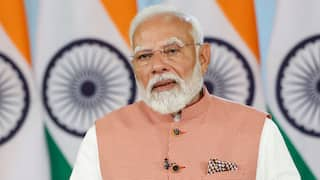Explorer
Unemployment at its peak with 7 million job loss between 2013 and 2015: Report
Unemployment has been one of India’s biggest challenges as the relationship between jobs and economic growth is getting weaker over time.

The current rate of unemployment is highest seen in India in at least the 20 years. (Image: AFP)
New Delhi: Unemployment has been one of India’s biggest challenges as the relationship between jobs and economic growth is getting weaker over time. In a recent report published by one of country’s renowned private institutes it has been mentioned that the biggest new challenge facing India's policymakers and administrators is rapidly rising unemployment. “Unemployment levels have been steadily rising, and after several years of staying around 2-3 per cent, the headline rate of unemployment reached 5 per cent in 2015, with youth unemployment being a very high 16 per cent,” the State of Working India 2018 (SWI) report said. It also added that the current rate of unemployment is highest seen in India in at least the 20 years.
The SWI report by the Centre for Sustainable Employment at Azim Premji University said there is an urgent need to think comprehensively about employment and for the government to formulate a focused National Employment Policy. “Between 2013 and 2015, total employment actually shrank by seven million. More recent data from private sources show that the absolute decline has continued past 2015,” the report highlighted.
This shortage of jobs is calculated by the depressing wage with 82 per cent of men and over 90 per cent of women in the country earning less than Rs 10,000 per month. The report also mentioned that the growth in Gross Domestic Product (GDP) has not complimented the commensurate growth in employment. A 10 per cent growth in GDP now results in less than 1 per cent growth in employment.
The report was co-written by a group of researchers, policymakers, journalists and civil society activists. The research numbers are relied primarily on data from the National Sample Survey Office and the Employment-Unemployment Survey (EUS) of the Labour Bureau—the last of which was conducted in 2015-16.
However, as per India's new payroll data prepared by the Employees Provident Fund Organisation (EPFO), around 9.5 lakh jobs were created in the formal sector in July, as against the requirement of more than a million joining the workforce each month.
Created on a view held by the critics of India’s economic reform process, the report also pointed out that the synchronisation between growth and employment generation has become weaker over the past few years. “In the 1970s and 1980s, when GDP growth was around 3-4%, employment growth was around 2% per annum. Since the 1990s, and particularly in the 2000s, GDP growth has accelerated to 7% but employment growth has slowed to 1% or even less. The ratio of GDP growth to employment growth is now less than 01,” the report highlighted.
Education Loan Information:
Calculate Education Loan EMI
Follow Education News on ABP Live for more latest stories and trending topics. Watch breaking news and top headlines online on ABP News LIVE TV
View More
Advertisement
Trending News
Advertisement
Advertisement
Top Headlines
Cities
India
Cities
Cities
Advertisement


Prosenjit NathThe writer is a technocrat, political analyst, and author.
Opinion









































